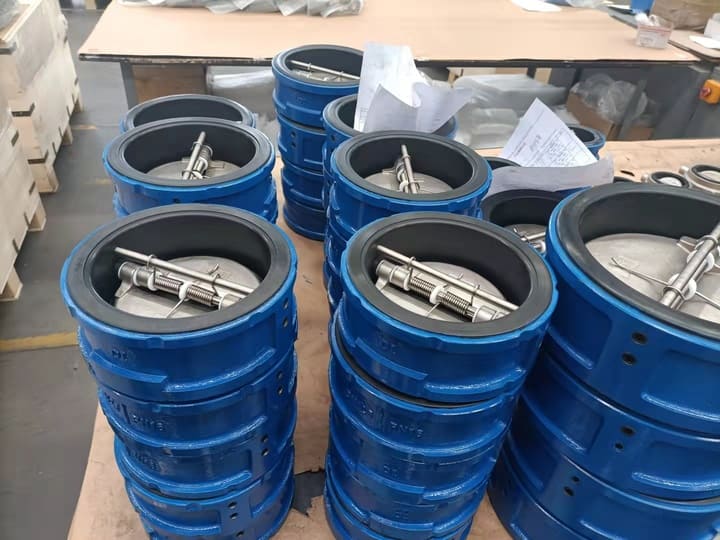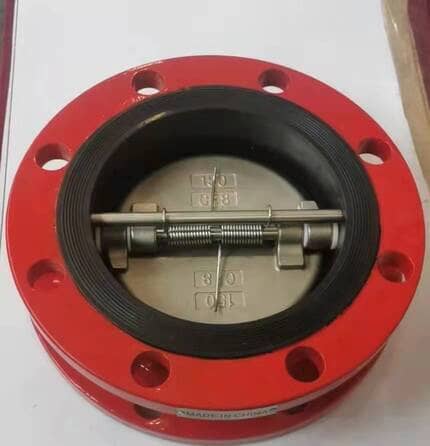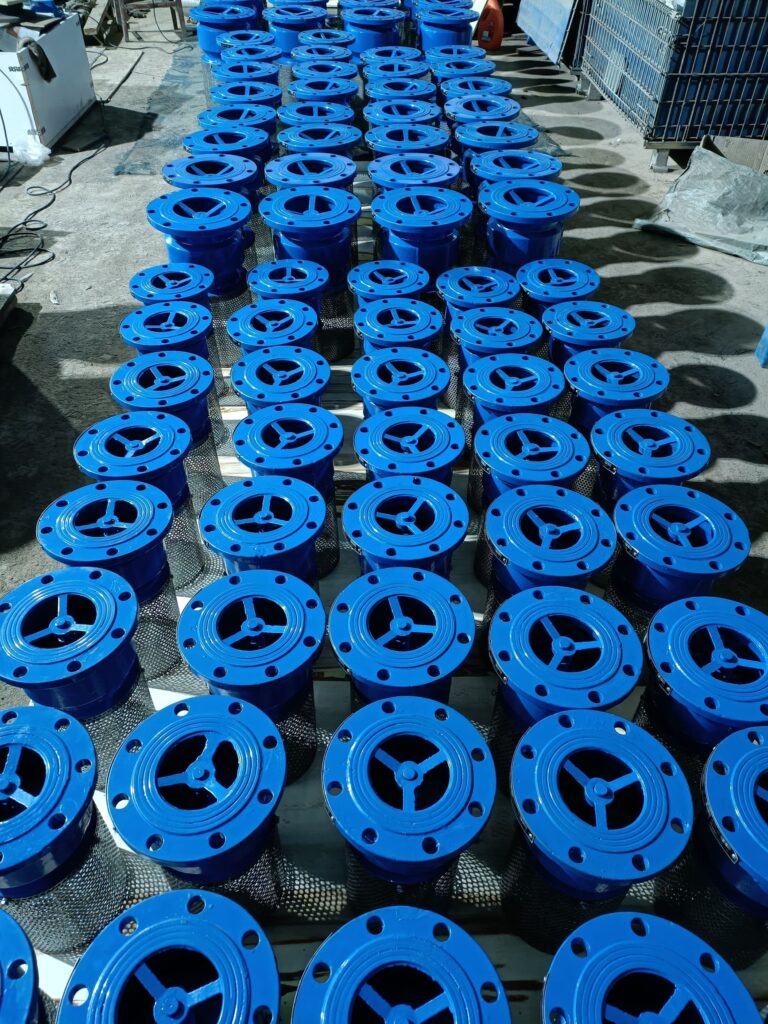
The maintenance and management of the valve includes the entire process of picking up and handling, inventory storage, and installation and use. It is an important guarantee for the normal operation of the valve.
Section 1 Maintenance of the valve during transportation
The valve hand wheel is damaged, the valve stem is bent, the bracket is broken, and the flange sealing surface is bumped and damaged, especially the damage of the gray cast iron valve. A considerable part of it occurs in the valve transportation process. The reason for the above-mentioned damage is mainly caused by the poor understanding of the basic common sense of the valve by the transportation personnel and the brutal loading and unloading operations.
Before transporting the valve, prepare ropes, lifting equipment and transportation tools. Check the valve packaging. If the packaging is damaged, it should be repaired and nailed. Don’t be afraid of trouble or fluke; the packaging must meet the requirements of the standard, and it is not allowed to rotate the handwheel of the packaged and sealed valve; the valve should be in a fully closed state. For the opened valve, wipe the sealing surface clean and then close tightly to close the inlet and outlet channels. The transmission device should be packaged and transported separately from the valve.
When the valve is shipped and hoisted, the rope should be tied to the flange or bracket, and never tied to the handwheel or valve stem. Lift the valve gently, don’t hit other objects, and place it smoothly. The position should be upright or obliquely, with the valve stem upward. For valves that are not securely placed, they should be tied up with ropes or fixed with pads to avoid collisions during transportation.
When manually loading and unloading valves, it is not allowed to throw the valves down from the vehicle, nor from the ground to the vehicle; the handling process should be orderly, arranged in sequence, and it is strictly forbidden to stack them.
During the transportation of the valve, take care of the paint, nameplate and flange sealing surface. It is not allowed to drag the valve on the ground, and it is not allowed to move the sealing surface of the valve inlet and outlet on the ground.
Valves that will not be installed at the construction site should not be unpacked, but should be placed in a safe place and protected from rain and dust.
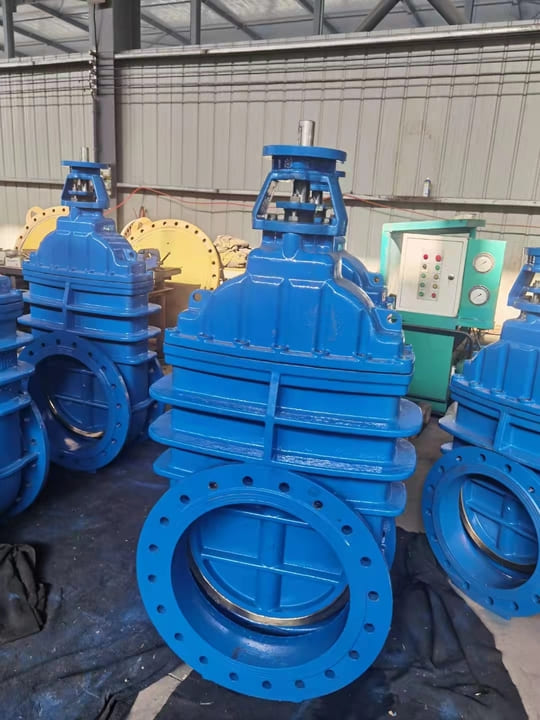
Section 2 Maintenance during valve custody
After the valve is transported into the warehouse, the custodian should go through the storage procedures in time, which is conducive to the inspection and storage of the valve. The custodian should carefully check the type and specification of the valve, check the appearance quality of the valve, and assist the inspector in the strength test and tightness test of the valve before storage. Valves that meet the acceptance criteria can go through the storage procedures; those that are unqualified should also be properly kept for disposal by the relevant departments.
For the valves in the warehouse, carefully wipe and clean the water, dust and dirt during the transportation of the valve; apply a layer of anti-rust agent or paste a layer on the processing surface, valve stem, and sealing surface that is easy to rust. Anti-rust paper should be used for protection; the valve inlet and outlet channels should be sealed with plastic cover or wax paper to prevent dirt from entering.
Inventory valves should be consistent with their accounts, classified into categories, neatly placed, clearly labeled, and easy to recognize. Small valves should be arranged on the shelf in the order of model specifications and sizes; large valves can be arranged on the floor of the warehouse and placed in blocks according to model specifications. Valves should be placed upright or obliquely. Do not touch the flange sealing surface to the ground, let alone stack them together. For extra-large valves and valves that cannot be stored temporarily, they should also be placed upright in an outdoor dry and ventilated place according to their category and size; the sealing surface of the valve should be protected with oil and the passage should be sealed; for the stuffing box without packing, in order to prevent rain When entering the valve, seal the stuffing box opening with grease or other grease, and cover it with linoleum or raincloth. It is best to set up a temporary storage shed to protect it.
In order to keep the valves in good condition, in addition to a dry, ventilated, clean and dust-free warehouse, there should also be an advanced and scientific management system; all the valves in storage should be maintained and inspected regularly, generally from the date of delivery. After 18 months, the pressure test should be re-inspected.
For valves that have not been used for a long time, if asbestos packing is used, the asbestos packing should be taken out of the stuffing box to avoid electrochemical corrosion and damage to the valve stem. For valves without packing, the manufacturer is generally equipped with spare packing, and the custodian should take care of it properly
Valve parts that are damaged or lost during transportation, such as hand wheels, handles, rulers, etc., should be provided in time and must be missing.
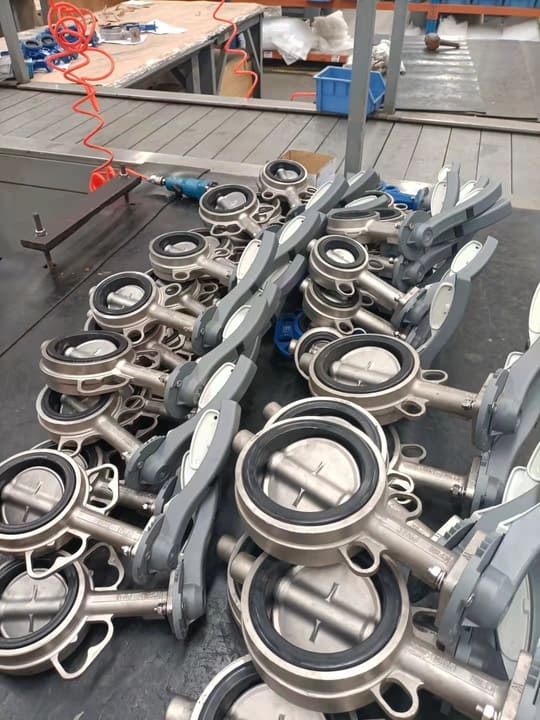
Section 3 Maintenance of the valve during operation
The purpose of maintenance during the operation of the valve is to ensure that the valve is kept clean all year round, with good lubrication, complete valve parts, and normal operation.
Cleaning of the valve
The surface of the valve, the trapezoidal thread on the valve stem and the valve stem nut, the sliding part of the valve stem nut and the bracket, gears, worm gears and other parts are prone to accumulate a lot of dust, oil, medium residues and other dirt, which will cause wear to the valve. And corrosion. Therefore, it is obviously very important to keep the exterior and movable parts of the valve clean and to protect the integrity of the valve paint. The dust on the valve is suitable for brushing and compressed air blowing; the trapezoidal thread and the dirt between the teeth are suitable for wiping with a rag; the oil and medium residues on the valve are suitable for steam blowing, or even brushing with copper wire, Until the processing surface and the mating surface show metallic luster, and the painted surface shows the natural color of the paint. The trap should be inspected by a dedicated person at least once per shift. The flush valve and the plug at the bottom of the trap should be opened regularly for flushing, or should be disassembled and flushed regularly to prevent dirt from blocking the valve.
Lubrication of the valve
The trapezoidal thread of the valve, the sliding parts of the valve stem nut and the bracket, the bearing parts, the meshing parts of gears and worm gears, and other cooperating movable parts, all need good lubrication conditions to reduce mutual friction and avoid mutual wear. Some parts are specially equipped with oil cups or nozzles. If they are damaged or lost during operation, they should be repaired and the oil circuit should be dredged.
Lubrication parts should be regularly refueled according to specific conditions. Frequently opened valves with high temperature are suitable for refueling once a week to a month; valves with infrequent openings and low temperature may have a longer refueling cycle. Lubricants: organic oil, butter, molybdenum disulfide and graphite, etc. High-temperature valves are not suitable for oil and butter, which will be lost due to high-temperature melting, and are suitable for injecting molybdenum disulfide and wiping graphite powder. For exposed parts that need to be lubricated, such as trapezoidal threads, gears, etc., if grease such as butter is used, it is easy to be contaminated with dust, while molybdenum disulfide and graphite powder are used for lubrication, which is not easy to contaminate dust, and the lubricating effect is better than butter. Graphite powder is not easy to apply directly, it can be used in paste form with a little oil or water.
The oil-filled plug valve should be filled with oil according to the specified time, otherwise it is easy to wear and leak.
Valve maintenance
For valves in operation, various valve parts should be complete and intact. The bolts on the flange and the bracket are indispensable, and the threads should be intact and no looseness is allowed. The tightening nut on the handwheel should be tightened in time if it is found to be loose to avoid wearing the connection or losing the handwheel and nameplate. If the handwheel is lost, it is not allowed to replace it with an adjustable wrench, and it should be equipped in time. The packing gland is not allowed to be skewed or have no pre-tightening gap. For valves in an environment that is easily contaminated by rain, snow, dust, sand and other dirt, the valve stem should be equipped with a protective cover. The ruler on the valve should be complete, accurate and clear. The lead seals, caps, and pneumatic accessories of the valve should be complete and intact. There should be no dents or cracks in the insulation jacket. It is not allowed to knock, stand or support heavy objects on the valve in operation; especially non-metal valves and cast iron valves, it is even more forbidden.
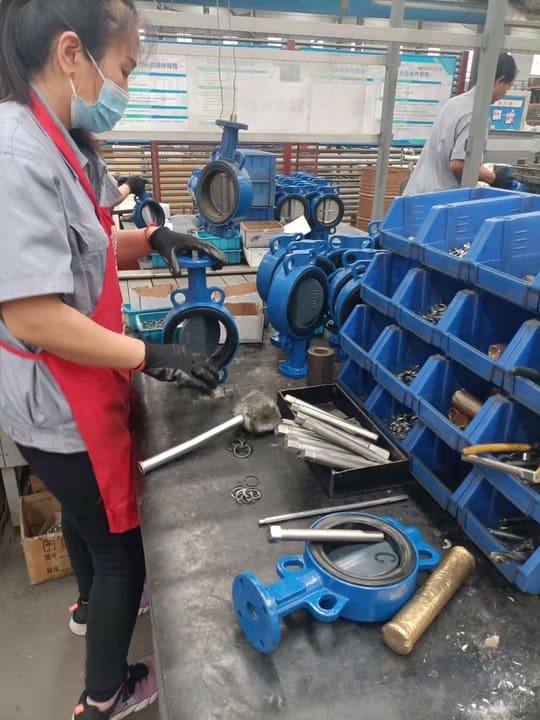
Section 4 Maintenance of Idle Valves
Maintenance of idle valves should be carried out together with equipment and pipelines, and the following tasks should be done:
Clean the valve
The inner cavity of the valve should be purged and cleaned without any residue or water solution. The outside of the valve should be wiped clean without any dirt or oil.
Equipped with valves
After the valve is missing, it cannot be dismantled to make up for the west. The valve parts should be equipped to create good conditions for the next use.
Anti-corrosion treatment
Take out the packing in the stuffing box to prevent electrochemical corrosion of the valve stem. The valve sealing surface, valve stem, valve stem nut, machined surface and other parts shall be coated with anti-rust agent and lubricating grease according to the specific conditions; painted parts should be painted with anti-corrosion Rust paint.
Protection
Prevent the impact of other objects, manual manipulation and disassembly, if necessary, fix the movable parts of the valve, and package and protect the valve.
Regular maintenance
Valves that have been idle for a long time should be inspected and maintained regularly to prevent rust and damage to the valve. For valves that have been idle for too long, they should be tested together with equipment, devices, and pipelines before they can be used.
Maintenance of electric devices
The daily maintenance of electric devices is generally not less than once a month. The maintenance content includes: clean appearance, no dust accumulation; the device is not contaminated by steam, water, and oil. The electric device is well sealed, and each sealing surface and point should be complete, firm, tight, and leak-free. The electric device should be well lubricated, and the oil should be added according to the regulations on time, and the valve stem nut should be greased. The electrical part should be intact, avoid moisture and dust erosion; if it is damp, a 500V megger should be used to measure the insulation resistance between all current-carrying parts and the shell, and the value should not be less than 0.38 megaohms, otherwise the relevant parts should be dried deal with. The automatic switch and thermal relay should not trip, the indicator light displays correctly, and there is no phase loss, short circuit, or open circuit fault. The working state of the electric device is normal, and the opening and closing are flexible.
Maintenance of pneumatic devices
The daily maintenance of pneumatic devices is generally not less than once a month. The main contents of the maintenance are: the appearance is clean, and there is no dust accumulation; the device should not be contaminated by water vapor, water, and oil. The sealing of the pneumatic device should be good, and the sealing surfaces and points should be complete and firm, tight and undamaged. The manual operating mechanism should be well lubricated and open and close flexible. No damage is allowed on the inlet and outlet air joints of the cylinder; all parts of the cylinder and the air piping system should be carefully inspected, and there must be no leakage that affects the performance. The pipe is not allowed to have dents, the annunciator should be in good condition, and the indicator light of the annunciator should be intact, whether it is a pneumatic annunciator or an electric annunciator, the connecting thread should be intact and there should be no leakage. The valve on the pneumatic device should be intact, leak-free, open flexibly, and flow smoothly. The entire pneumatic device should be in a normal working state, with flexible opening and closing.
